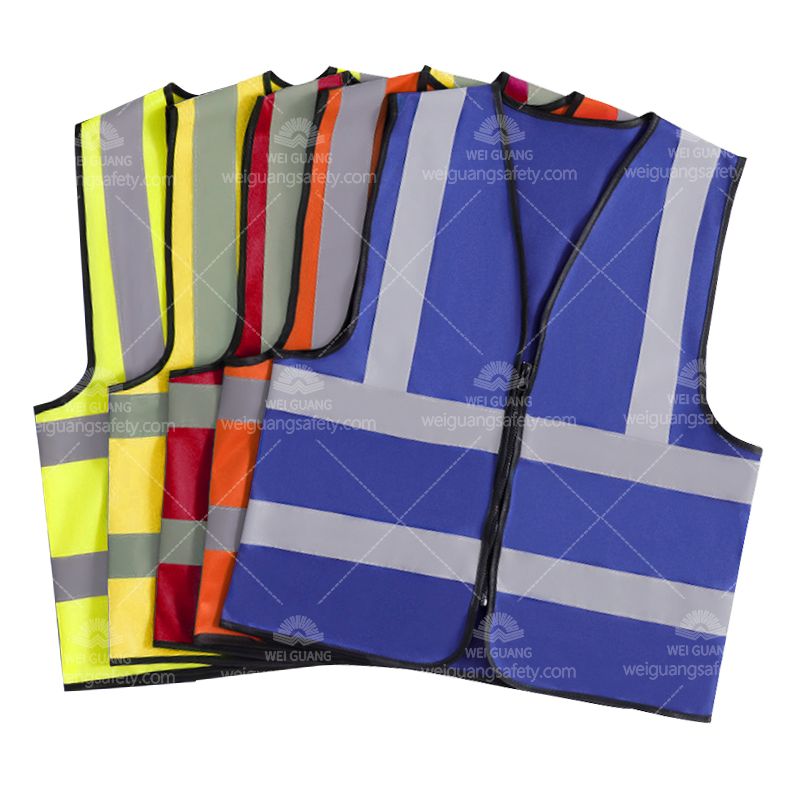Apr. 16, 2025
When it comes to jobsite safety, visibility can make the difference between a close call and a serious accident. That’s why companies across construction, transportation, and industrial sectors invest in visibility-enhancing gear. Two of the most commonly used solutions are reflective safety clothing and high-visibility (hi-vis) workwear. While often used interchangeably, these two types of gear serve different purposes and offer unique advantages. In this article, we compare them across several key dimensions to help you decide which is better suited for your work environment.
Reflective safety clothing is designed specifically to reflect light back toward its source, making the wearer visible in low-light or nighttime conditions. It is ideal for roadside workers, utility crews, and emergency responders who operate in dark environments illuminated by artificial lighting, such as headlights.
High-visibility workwear, on the other hand, uses bright fluorescent colors—like neon yellow, orange, or green—to enhance visibility in daylight and low-light conditions. This makes it more appropriate for daytime outdoor work such as construction sites, warehouses, and railways. Unlike reflective materials, fluorescent fabrics are highly effective in diffused light (e.g., dawn or dusk).
This gear is often favored by industries where night work is unavoidable. Utility maintenance teams, tow truck operators, and airport ground crews rely on reflective clothing to remain visible under direct light sources.
Hi-vis workwear is commonly used in construction, road repair, logistics, and mining sectors. According to OSHA and ANSI standards, many of these sectors require high-visibility garments for daytime use, especially in environments where moving vehicles and equipment pose risks.

Reflective garments often meet ANSI/ISEA 107 Class 2 or 3 requirements, ensuring visibility at distances up to 1,280 feet under headlight conditions. The retroreflective tape used on these garments is tested for brightness, durability, and wash cycles.
Hi-vis garments also comply with ANSI/ISEA 107 standards but differ in focus. They must maintain visibility under both direct and ambient light and are tested for color fastness and UV resistance. Fluorescent materials are generally more effective during the day than reflective-only garments.
Reflective clothing typically costs more due to the additional materials like retroreflective tape and coatings. However, high-end models may offer longer lifespans with up to 50 industrial wash cycles, making them a solid investment for night crews.
Hi-vis clothing tends to be more affordable and offers better breathability and comfort for long working hours. That said, color fading over time due to sun exposure can reduce its effectiveness, leading to more frequent replacements.
Best suited for night operations, reflective gear performs well on highways, tunnels, and industrial sites with artificial lighting. For example, a highway maintenance worker wearing reflective gear can be seen by an oncoming car 3-5 seconds earlier than someone without it—enough time to prevent a collision.
Ideal for daylight use in fast-moving environments like railways and construction zones, hi-vis clothing ensures that workers stand out against backgrounds. A forklift operator in a warehouse, for example, can spot a worker in hi-vis gear from across the floor, reducing accident risk.
Pros: Superior night-time visibility; compliant with strict safety regulations; often waterproof and flame-resistant.
Cons: Less effective in daylight; can be bulkier and warmer to wear; higher initial cost.
Pros: Highly visible in daylight; lightweight and breathable; generally more affordable.
Cons: Limited night-time visibility without reflective elements; may require frequent replacement due to fading.
Both reflective safety clothing and high-visibility workwear play critical roles in improving workplace safety. The right choice depends on your operational environment and visibility needs. For night-time or low-light work, reflective safety vest is the clear winner. For daytime operations with ample light, high-visibility workwear offers comfort, compliance, and cost efficiency.
For maximum safety, many employers opt for garments that combine both fluorescent and reflective features—providing 24-hour visibility protection. Evaluate your team’s work hours, jobsite hazards, and budget to make an informed decision that keeps everyone safe and seen.
Previous: None
Next: None
If you are interested in sending in a Guest Blogger Submission,welcome to write for us!
All Comments ( 0 )